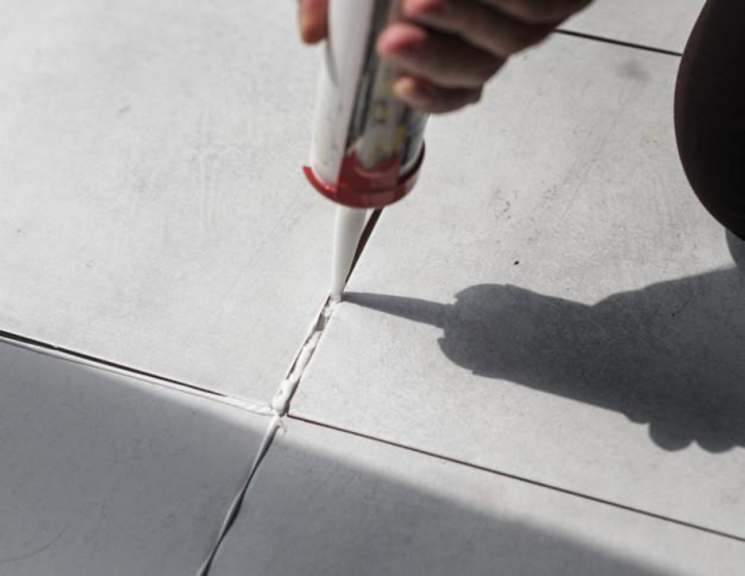Grout is an important part of the tile installation process. Here we take a look at whether you can tile without grout.
One question that has been asked throughout the ages has been, can you tile without grout? Well, very simply put, the short and simple answer is a no. You should not try to get tiles installed without grout. You may be wondering as to the reasoning behind it because grout does not add any extra stability to the tile installation, so why exactly is it so necessary?
To put it very simply, the various natural materials such as stones, are usually manufactured for use with a size that is pretty consistent and they all look almost totally identical. This is the very reason that many who are new to tile installation may think that grout is not necessary.
Then there is also the common statement that when you install tiles without grout, it simply looks better and that it makes the work seem much more well put together. However, the experts will normally in almost all cases tell you that this option is not a particularly good one. They will go on to tell you that even the thinnest of grout lines can make a world of difference.
Why you need grout
It is pretty understandable that most people who install tiles have a sort of love-hate relationship with grout. It does tend to take up a lot of time and it requires a lot of effort and hard work. There may also be cases where installing tiles without grout may make the result seem better.
The fact of the matter, however, is that if you want the installation to last, then you will need to make use of grout. Tiles installed without grout have a much higher chance of breaking. This means that you will have to work on them again.
Having said all of these, let us now take a look at why installing tiles without grout lines is a bad idea and why you should not break traditional tiling methods.
Tiles are not identical
There is a very good chance that by simply looking at the tiles that you have at your disposal, you may think they are of the same size, but there are very high chances that they are not in fact of the same size. The differences are usually so minor and miniscule, that it is almost impossible to tell apart without the help of some sort of precise measurement. Even though the differences are very small, they can, however, disturb the process of groutless installation. It is important to note that when you put these tiles together, the tiny irregularities that cannot be seen by the eyes, do add up to make it much more noticeable. This will make the final outcome look a bit off and also look very unprofessional. To see tiles that are not aligned properly after you spend hours toiling on installing them, we can assume would be the last thing you would want.
What grout does, is that it allows you to cover the differences in the sizes of the tiles and get a better grip on the final outcome. Even the smallest of lines can make a world of difference and have the potential to make the tiles fit perfectly. This will result in a final outcome that has a very nice and symmetrical look.
Caught between tiles
It does not matter what the size of the project is, there are certain elements that are very likely to get between your tiles if you do not grout them. It can be things such as dust, dead cells or may be even other debris. These can all find a way in between your tiles and it does not matter how tight you think the installation is. The purpose of grout is to prevent such scenarios from taking place.
You can literally spend hours toiling and putting the tiles together and you may even be pretty pleased with the result. But without applying grout, there will always be those small pesky spaces that can act as magnets for attracting debris and dust. Given enough time, these debris and dust will accumulate to such an extent that it will ruin the whole tiling installation.
Another very important point to note is that you should not make the mistake of assuming that you can clean the tiles after they have been installed. This can be a pretty daunting task as just even the smallest of mistakes has the potential to permanently damage the tiles which will then need repairs or replacements.
Probably the best way to avoid this nightmarish scenario is to, yes, you guessed it right, use grout in the process of installation.
Tiles Move
Tiles move, yes you read that right, tiles do move. This is yet another reason to ditch the entire concept of installing tiles without the use of grout. Because the tiles move, as a result, the edges of the tiles will regularly rub with each other. This is likely to cause the tiles to chip or even break at some point in the future. The point is that because they move, unless you install grout, they will, eventually, chip and break. Now think about that for a second, do you want that to happen to your tiles? We will assume no, hence grout.
Yes there does exist other tips and tricks to make use of but the fact of the matter is that they only minimize the impact and they most definitely do not stop the tiles from moving and hence rubbing against one another. Grout acts as a buffer in instances such as this. Grout prevents the tiles from rubbing against one another when they go through the process of expansion and contraction.





